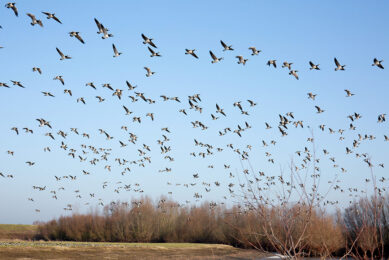US report: Zoonotic diseases prevention plan
Significant weaknesses undermine the global community’s abilities to prevent, detect early, and respond efficiently to potentially deadly species-crossing microbes, such as the pandemic H1N1 influenza virus sweeping the globe, says a new report from the Institute of Medicine and National Research Council.
The report provides a detailed plan for establishing and funding a comprehensive, globally coordinated system to identify novel zoonotic disease threats as early as possible wherever they arise so appropriate measures can be taken to prevent significant numbers of human illnesses and deaths, and livestock losses.
International scope
US federal agencies – particularly the US Agency for International Development – should spearhead efforts to develop this system and work with international partners to provide funding and technical assistance to build the expertise, equipment, and other components of zoonotic disease surveillance and response capabilities in countries worldwide, said the committee that wrote the report. Species-jumping pathogens have caused more than 65% of infectious disease outbreaks in the past 6 decades, and have racked up more than $200 bln in economic losses worldwide over the past 10 years, the report notes.
Integration is key
Greater integration of human health and veterinary medicine sectors should be a key feature of this new system because the lack of coordination and communication between these groups results in missed opportunities to detect potential species-crossing pathogens and leads to less effective measures to contain diseases. The report also recommends a fundamental shift in surveillance away from urgent, time-constrained reactions to individual diseases when they arise to a sustained focus on preventing the conditions for zoonotic agents to emerge and looking for signs of possible threats on an ongoing basis.
Funding and incentives
USAID should also lead an effort to identify sustainable funding sources to develop and maintain this new system, the report continues. Funding for surveillance traditionally has focused on individual diseases with disproportionate resources aimed at infections in humans compared with those in animals. Moreover, development aid budgets tend to fluctuate with changes in leadership or priorities. The effort to find sustainable funding should specifically consider a tax on internationally traded meat and meat products as one possible mechanism, although the pros and cons of all options must be weighed to determine which funding sources will work best, the report notes.
The US government and other donor organizations should provide economic incentives and technical and medical assistance to encourage the reporting of outbreaks and to lessen the social and economic consequences. Repercussions such as drops in trade and tourism and necessary culling of livestock can lead individuals and nations to conceal outbreaks.
Greater transparency
In addition, the report calls for the DG of the World Organization for Animal Health (OIE) to have the power to declare animal health emergencies and make public credible information it receives about animal disease outbreaks if national governments fail to provide information in a timely manner. Greater transparency could improve control of animal diseases before they decimate livestock or wildlife or make large numbers of people sick.
“Developing an effective global system for detecting and responding to emerging zoonotic diseases is a tall order,” said committee co-chair Gerald T. Keusch, associate provost for global health and associate dean for global health, School of Public Health, Boston University, Boston. “However, given the political will and financial resources that have been marshaled time and again to respond to the individual ‘disease du jour’ as each has arisen, we believe it is possible to implement a sustainable, integrated human and veterinary disease surveillance system that is acceptable to all stakeholders. And we must do so now.”
“Zoonotic diseases are like wildfires, which flare up unexpectedly and can take a significant toll on human and animal health and damage household livelihoods as well as national economies,” said co-chair Marguerite Pappaioanou, executive director, Association of American Veterinary Medical Colleges, Washington, D.C. “All too often, our reaction to these outbreaks has been to try containing a wildfire after it has gotten out of control. We need a system that enables us to prevent the conditions for these disease flare-ups to occur in the first place and to spot them earlier when we can take more effective and measured actions to limit the damage.”
Obstacles
Many obstacles have stymied the development of a more collaborative and robust disease surveillance system, the report says, including the low priority given to health issues by political leaders in some countries, lack of sufficient financing and coordinated governance, and lack of cooperation and integration among human and animal health experts.
USAID and other international agencies need to establish an entity to coordinate nations’ zoonotic disease detection and response efforts. The United Nations’ strategy of appointing a U.N. system influenza coordinator to collaborate with various individuals, groups, and countries involved in the avian influenza outbreak of 2003 could serve as a model, the report says.
Source: News release The National Academies (The National Academy of Sciences, National Academy of Engineering, Institute of Medicine, and National Research Council)
Join 31,000+ subscribers
Subscribe to our newsletter to stay updated about all the need-to-know content in the poultry sector, three times a week. Beheer
Beheer








 WP Admin
WP Admin  Bewerk bericht
Bewerk bericht